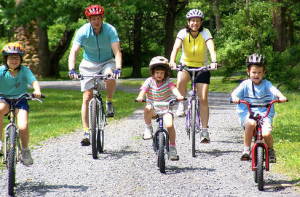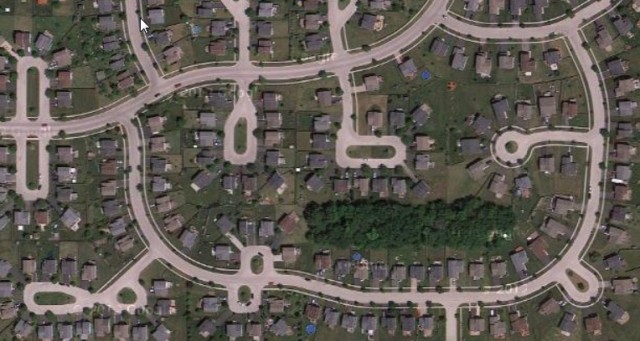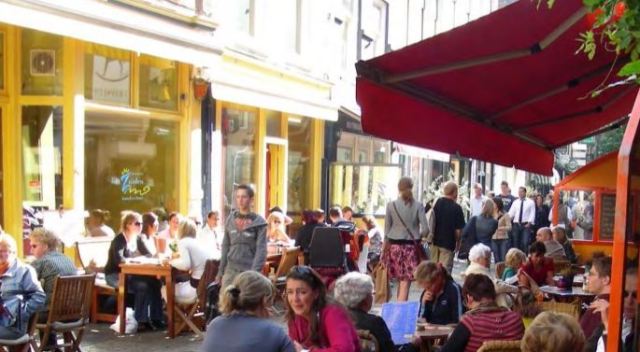Let’s start with the “short list”:
– This isn’t meant as a forum to complain and whine about problems… though we will examine them to determine just how much they cost (in $$$, inefficiencies, safety, etc.), especially when considered together, instead of just individually.
– This isn’t a “Downtown Renovation” project (“Can’t renovate what we don’t have!”)… but we will discuss the impact of not having one, what we’re missing, and possible options for maybe one day?
– This isn’t an attempt to build an “identity” for our village… though (like a walkable downtown) that’s missing too. As we grow awareness (and hopefully participation), we just might find out what we’re about, what we value, and end up telling the world about it!
We actually have a LOT of optimism for the future of Round Lake Beach, based on what we’ve seen happening over the last decade in similarly-impacted municipalities across the country. There is a new discipline emerging in the field of Public Administration called “Sprawl Repair“. We’ve seen how small towns and villages have met the challenge of poor/no planning, the negative effects of putting cars as Priority #1 all the time, the elimination of public and civic space, the disenfranchising of pedestrians and bicyclists… and how these towns have effectively re-built themselves from the inside-out, one small space at a time, often with next to no budget. And of course, we have absolutely AWESOME residents here!
2012 marked the 75th Anniversary of the Village of Round Lake Beach. Over several decades, many decisions were made. Some were well-meaning, but bad choices in hindsight. Others which should have been made were avoided all together. Like decisions to plan the framework of the village FIRST, around which all other decisions would be made: neighborhoods, tax districts, roads and sewers and power right-of-ways, retail, light industry, zoning, parks, building codes, local ordinances… matters about which we rightly expect our local governments to attend, to establish a safe, stable environment so that we may go about our lives making a living and raising our families, and that commerce may thrive.
We will examine some of the choices which were made in growing our village. Choices with consequences we have to live with everyday. Consequences like:
- No real “downtown” or central business district
- Lack of multi-use “places” for residents to gather, meet, communicate, celebrate, incubate ideas, etc. (AKA: The “Living Rooms” of our Village)
- Dependence on busing as a solution to get our children to nearby schools
- Dependence on major outside employers
- Poor connectivity between different sections of the village
- No traditional “streets” which would foster activity, atmosphere, and business
- Excess parking, anyone?
- Stifling effect of “well-meaning” zoning and ordinances on local businesses and entrepreneurship
We will also be proposing MANY fixes to address these issues, with an emphasis on low-cost ideas first, to get some early successes and build enthusiasm. Based on experience, we know that the idea of “CHANGE” is difficult, as it could require admitting that cherished ideas and decades-old “proven” concepts were wrong (or even counter-productive).
When designed and implemented correctly, using learnings from centuries of successful examples around the world, a city will have a “built-in” complement of positive elements which help its residents not just exist from day-to-day, but thrive and succeed.
Elements like “civic space“, and connectivity, and mixed-use areas which maximize the utility and value of a place. An understanding that we were designed and born to walk. A connection to providing for our own food (at least to some degree), and eating outdoors, which goes back several millenia. Places to meet and greet and exchange ideas and information. An opportunity for “community” and neighbors to become real.
When done incorrectly, utilizing modern automobile-centric design principles and completely disregarding the lessons of the past, well… you’ve heard of “sprawl”. Its problems are not limited only to large swaths of land mass-converted into subdivisions, strip malls, and industrial parks. A small town could incrementally create the same types of problems for itself, thinking it is doing its best while complying the with latest modern concepts in zoning and design.
Fortunately, we’re able to share examples of successes from all across the country as more and more communities take up the challenge of building their neighborhoods, their villages, towns, and cities, into functional, enjoyable places of value. Join us as we look at ways to build some “resilience” into our village, making it a sustainable and “strong” town ready to transition to meet the challenges and promise of the next 75 years!
—————————————————————————————————————————
[Disclaimer: This is a personal blog, intended to share views and thoughts of our small group of friends and neighbors about the perceived strengths, challenges, and opportunities of our village. We will frequently link to existing content when it can make the point; otherwise, the content is ours and in no way reflects the opinions or support of the government of the Village of Round Lake Beach… though it should!]






Speaking of civic space, is there anything in the works of creating a teen youth center? Not referring to the one that only has summer programs, but one that would implement a resource for students during the school year. Check out http://www.RLAYC.webnode.com to join the discussion.